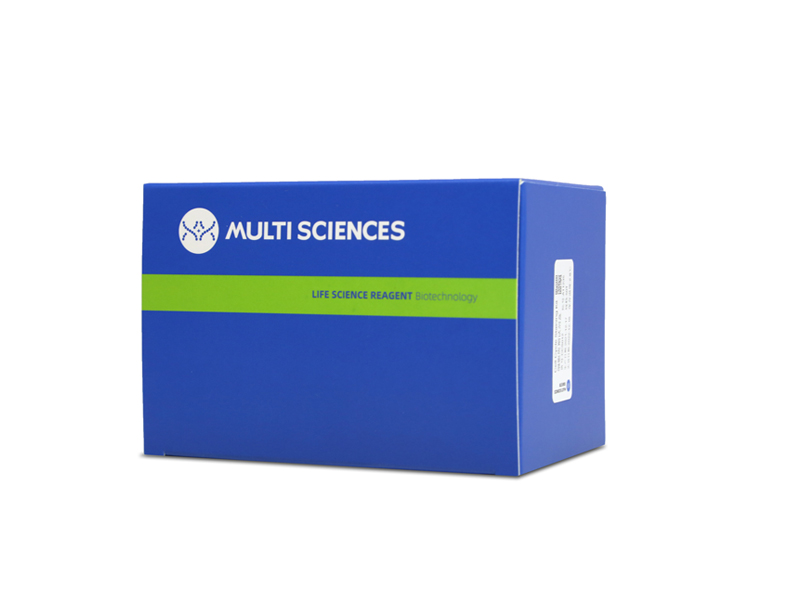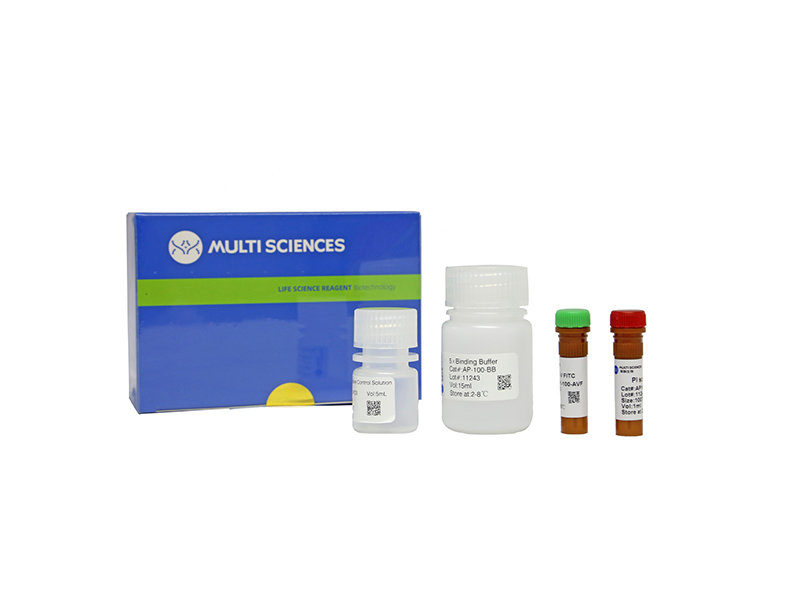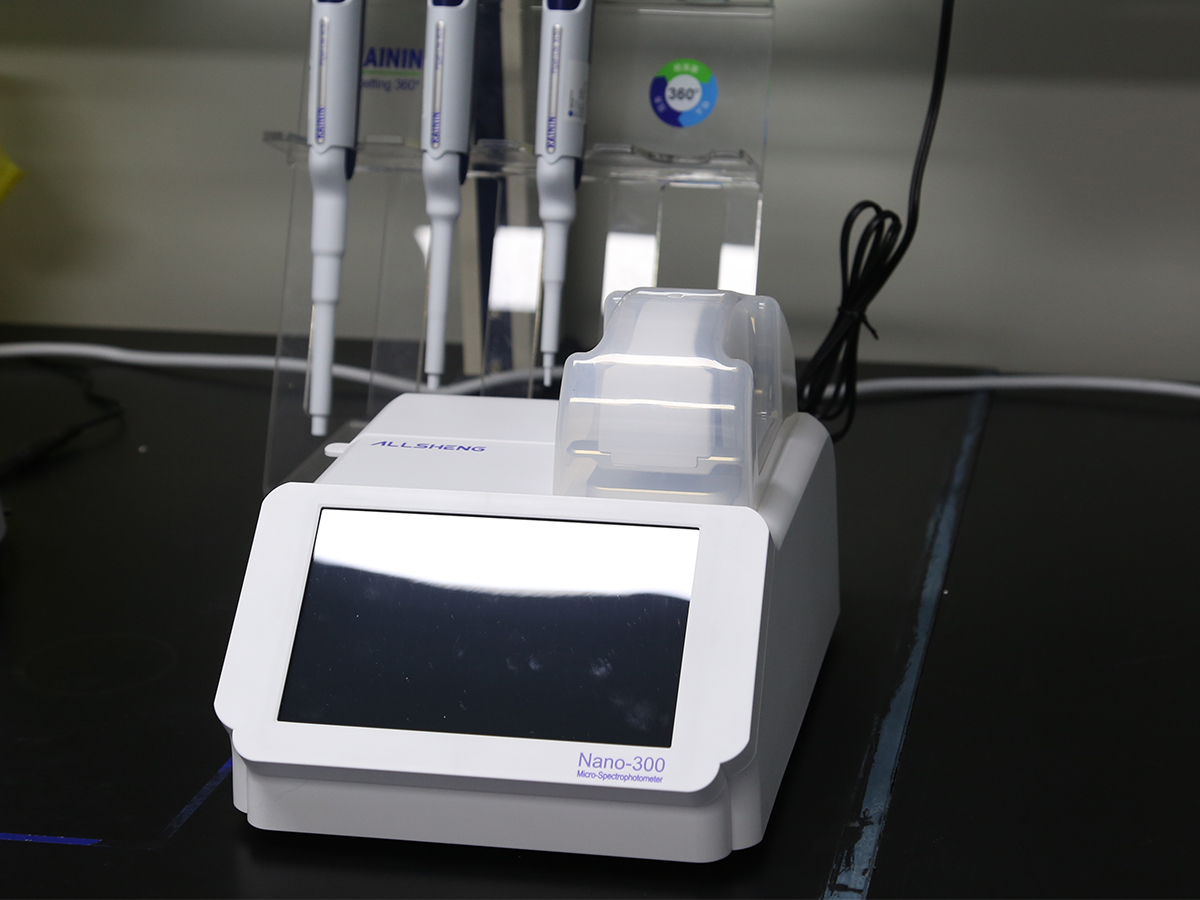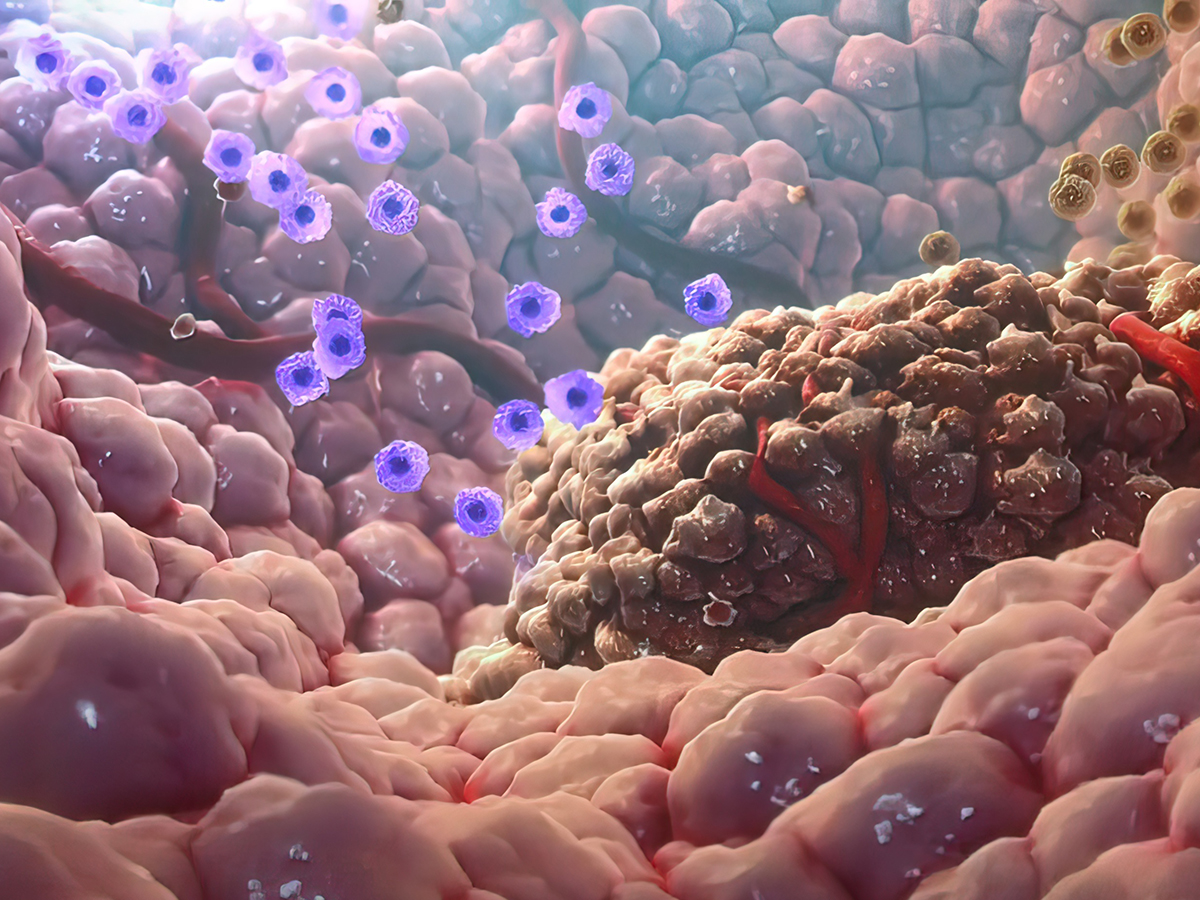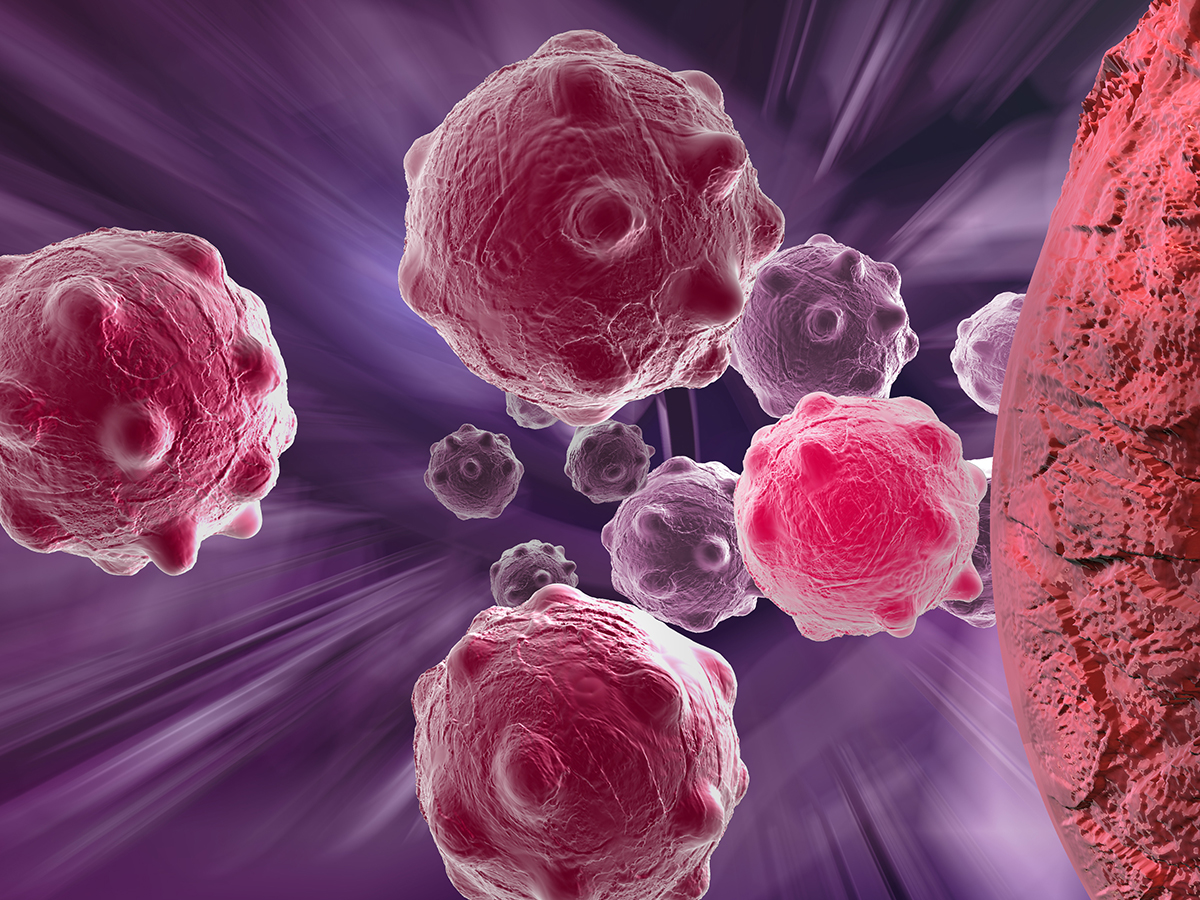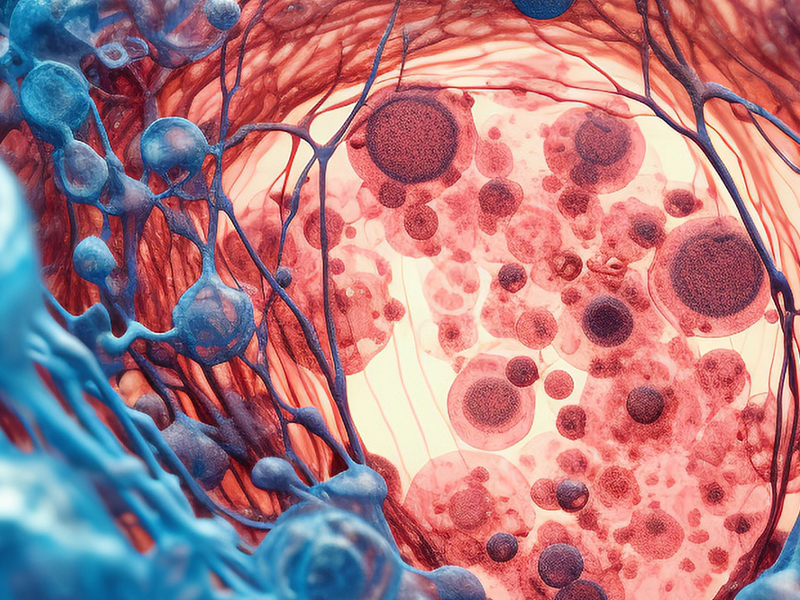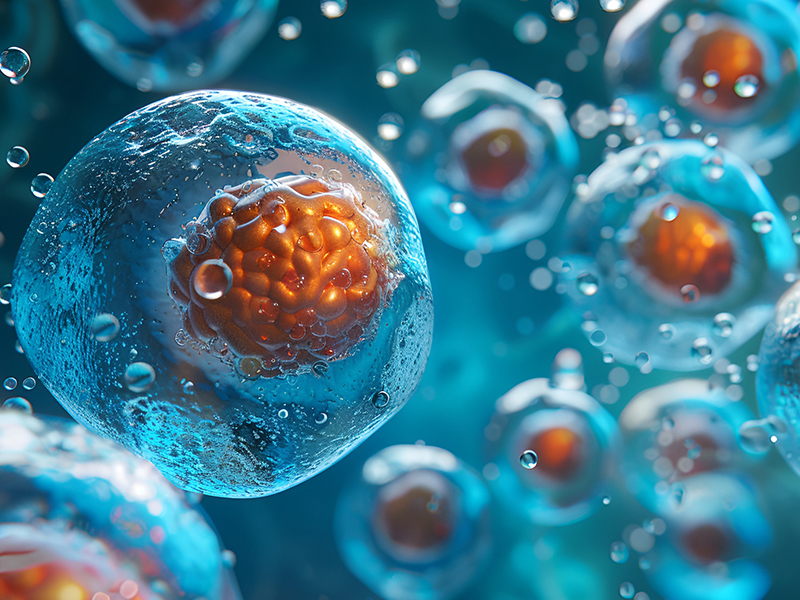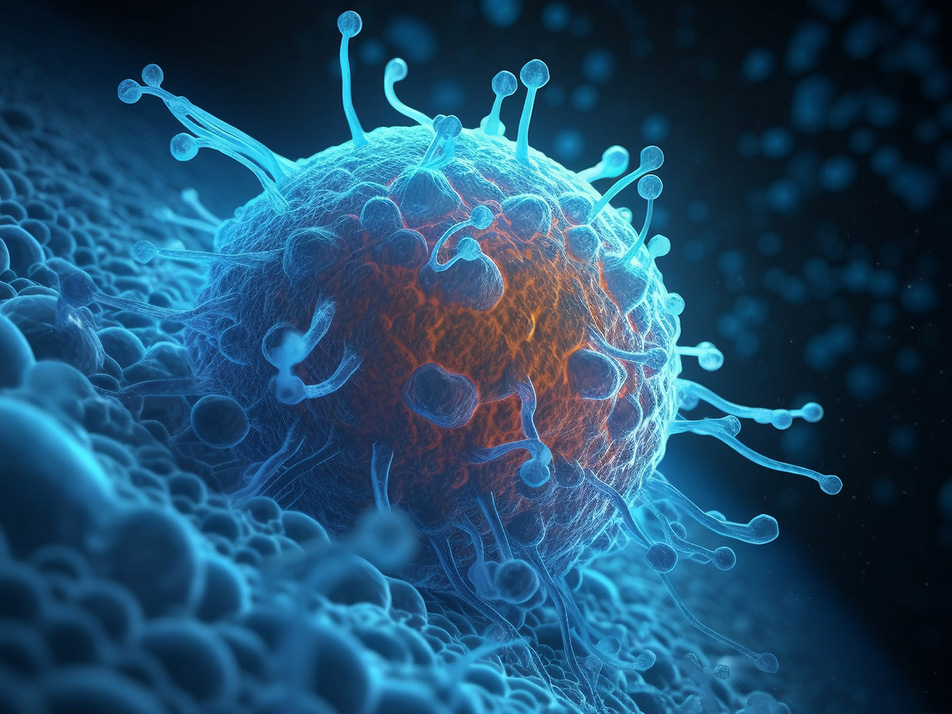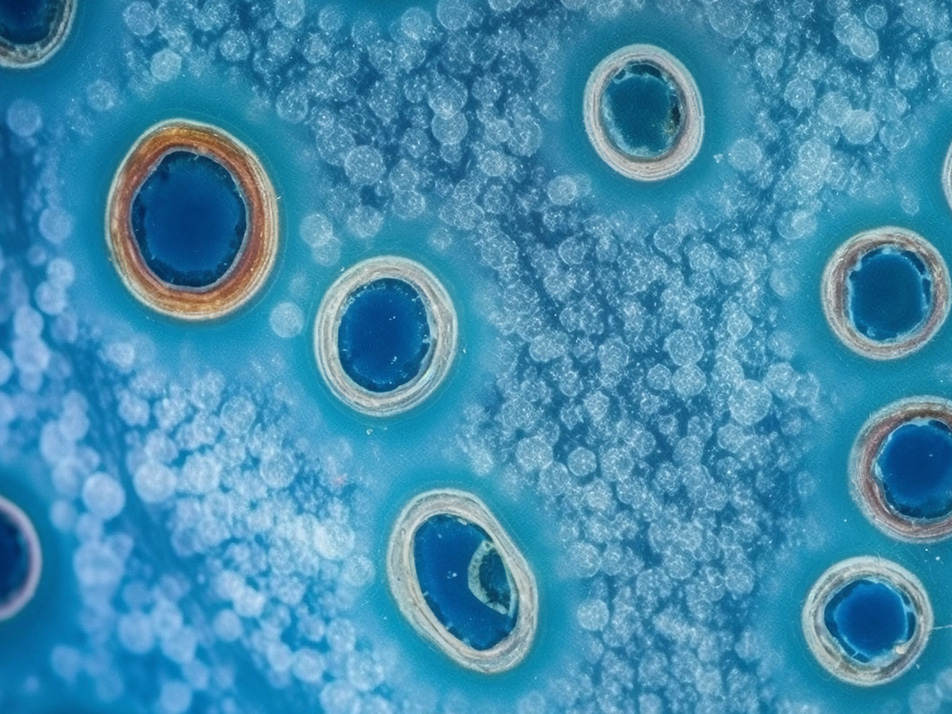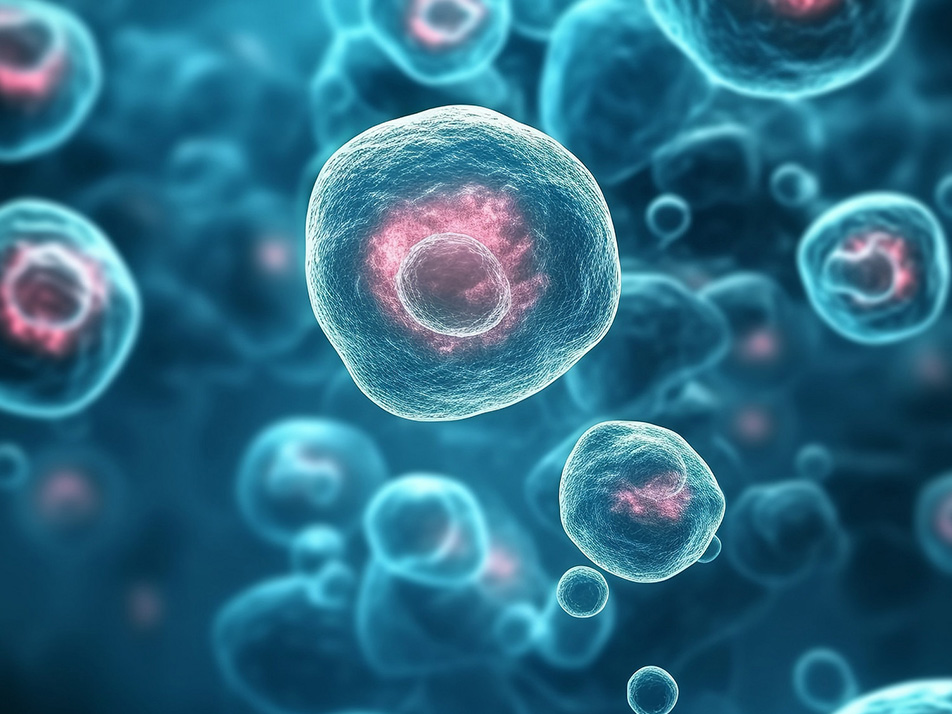Annexin V-PE/7-AAD Apoptosis Kit 细胞凋亡试剂盒
¥780.00 – ¥1,860.00
在售SKU:70-AP104-100, 70-AP104-60, 70-AP104-30, 凋亡, 细胞凋亡, 凋亡试剂盒, 细胞凋亡试剂盒, 凋亡检测, 细胞凋亡检测, 凋亡检测试剂盒, 细胞凋亡检测试剂盒, Annexin V, Annexin, Apoptosis, 7AAD, 7-AAD, AAD
描述
产品简介
Annexin V(或 Annexin A5)为胞内蛋白膜联蛋白家族成员,以钙依赖的方式与磷脂酰丝氨酸(PS)结合。PS 存在于正常细胞浆膜的内层,但在凋亡早期,膜不对称性丧失,PS易位至细胞表面。荧光标记的 Annexin V 可与之特异性结合,表明该细胞为凋亡细胞。
产品特点
- 操作简便,15分钟即可完成染色;
- 分群清晰,结果稳定可靠;
- 独家搭配阳性质控液,补偿调节不再困难。
结果示例

试剂盒组分
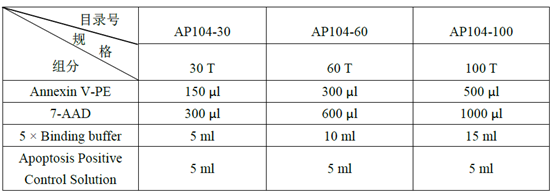
引用文献统计
该产品被引用的文献总数为:95
- Long non‑coding RNA 01614 hyperactivates WNT/β‑catenin signaling to promote pancreatic cancer progression by suppressing GSK‑3β
影响因子:5.884刊物:INTERNATIONAL JOURNAL OF ONCOLOGY发表日期:2022/8/4 - Ethanol extract of Pycnoporus sanguineus relieves the dextran sulfate sodium-induced experimental colitis by suppressing helper T cell-mediated inflammation via apoptosis induction
影响因子:4.545刊物:BIOMEDICINE & PHARMACOTHERAPY发表日期:2020/5/11 - TAF‑Iβ deficiency inhibits proliferation and promotes apoptosis by rescuing PP2A and inhibiting the AKT/GSK‑3β pathway in leukemic cells
影响因子:1.448刊物:Experimental and Therapeutic Medicine发表日期:2019/9/17 - BCAP31, a cancer/testis antigen-like protein, can act as a probe for non-small-cell lung cancer metastasis
影响因子:3.998刊物:Scientific Reports发表日期:2020/3/4 - Comprehensive identification of signaling pathways for idiopathic pulmonary arterial hypertension
影响因子:3.485刊物:AMERICAN JOURNAL OF PHYSIOLOGY-CELL PHYSIOLOGY发表日期:2020/4/30 - An insertion mutation of ERBB2 enhances breast cancer cell growth and confers resistance to lapatinib through AKT signaling pathway
影响因子:2.029刊物:Biology Open发表日期:2020/1/15 - Water Extract of Sporoderm-Broken Spores of Ganoderma lucidum Induces Osteosarcoma Apoptosis and Restricts Autophagic Flux
影响因子:3.046刊物:OncoTargets and Therapy发表日期:2019/12/31 - Long Non-coding RNA H19 Promotes NLRP3-Mediated Pyroptosis After Subarachnoid Hemorrhage in Rats
影响因子:6.8刊物:Translational Stroke Research发表日期:2022/11/24 - Downregulation of ZMYND11 induced by miR-196a-5p promotes the progression and growth of GBM
影响因子:2.466刊物:BIOCHEMICAL AND BIOPHYSICAL RESEARCH COMMUNICATIONS发表日期:2017/10/21 - LINC01980 facilitates esophageal squamous cell carcinoma progression via regulation of miR-190a-5p/MYO5A pathway
影响因子:3.391刊物:ARCHIVES OF BIOCHEMISTRY AND BIOPHYSICS发表日期:2020/4/20 - Inhibitory effects and mechanisms of the anti-covid-19 traditional Chinese prescription, Keguan-1, on acute lung injury
影响因子:4.36刊物:JOURNAL OF ETHNOPHARMACOLOGY发表日期:2021/11/14 - Bioadaptation of implants to In vitro and In vivo oxidative stress pathological conditions via nanotopography-induced FoxO1 signaling pathways to enhance Osteoimmunal regeneration
影响因子:14.593刊物:Bioactive Materials发表日期:2021/3/10 - SZB120 Exhibits Immunomodulatory Effects by Targeting eIF2α to Suppress Th17 Cell Differentiation
影响因子:5.422刊物:JOURNAL OF IMMUNOLOGY发表日期:2021/3/1 - lncRNA GCAT1 is involved in premature ovarian insufficiency by regulating p27 translation in GCs via competitive binding to PTBP1
影响因子:7.032刊物:Molecular Therapy-Nucleic Acids发表日期:2020/11/4 - Long non-coding RNA LSAMP-1 is down-regulated in non-small cell lung cancer and predicts a poor prognosis
影响因子:6.429刊物:Cancer Cell International发表日期:2022/5/6 - MicroRNA‑340 inhibits tumor cell proliferation, migration and invasion, and induces apoptosis in hepatocellular carcinoma
影响因子:1.692刊物:Molecular Medicine Reports发表日期:2017/9/21 - Intracellular virus sensor MDA5 exacerbates vitiligo by inducing the secretion of chemokines in keratinocytes under virus invasion
影响因子:6.304刊物:Cell Death & Disease发表日期:2020/6/12 - RIP1-Mediated Necroptosis Facilitates Oxidative Stress‒Induced Melanocyte Death, Offering Insight into Vitiligo
影响因子:8.551刊物:JOURNAL OF INVESTIGATIVE DERMATOLOGY发表日期:2021/6/5 - Myocardium-targeted transplantation of PHD2 shRNA-modified bone mesenchymal stem cells through ultrasound-targeted microbubble destruction protects the heart from acute myocardial infarction
影响因子:8.579刊物:Theranostics发表日期:2020/4/6 - RvD1 accelerates the resolution of inflammation by promoting apoptosis of the recruited macrophages via the ALX/FasL-FasR/caspase-3 signaling pathway
影响因子:5.241刊物:Cell Death Discovery发表日期:2021/11/8 - The carboxyl terminus of heat shock protein 70-interacting protein (CHIP) participates in high glucose-induced cardiac injury
影响因子:5.606刊物:FREE RADICAL BIOLOGY AND MEDICINE发表日期:2017/2/28 - Aqueous extract of Taxus chinensis var. mairei regulates the Hippo-YAP pathway and promotes apoptosis of non-small cell lung cancer via ATF3 in vivo and in vitro
影响因子:6.53刊物:BIOMEDICINE & PHARMACOTHERAPY发表日期:2021/3/16 - HMGB1 knockdown increases the radiosensitivity of esophageal squamous cell carcinoma by regulating the expression of molecules involved in DNA repair
影响因子:2.967刊物:Oncology Letters发表日期:2021/4/29 - Effects of S100A6 gene silencing on the biological features of eutopic endometrial stromal cells and β‑catenin expression
影响因子:1.692刊物:Molecular Medicine Reports发表日期:2017/1/5 - Interventional Photothermal Therapy Enhanced Brachytherapy: A New Strategy to Fight Deep Pancreatic Cancer
影响因子:15.804刊物:Advanced Science发表日期:2019/1/15 - Nicotinamide N-methyltransferase enhances resistance to 5-fluorouracil in colorectal cancer cells through inhibition of the ASK1-p38 MAPK pathway
影响因子:5.008刊物:Oncotarget发表日期:2016/6/13 - Nicotinamide N-methyltransferase enhances the capacity of tumorigenesis associated with the promotion of cell cycle progression in human colorectal cancer cells
影响因子:3.043刊物:ARCHIVES OF BIOCHEMISTRY AND BIOPHYSICS发表日期:2014/9/6 - Down-Regulation of Nicotinamide N-methyltransferase Induces Apoptosis in Human Breast Cancer Cells via the Mitochondria-Mediated Pathway
影响因子:3.534刊物:PLoS One发表日期:2014/2/18 - Differential effects of nerve growth factor on expression of dopamine 2 receptor subtypes in GH3 rat pituitary tumor cells
影响因子:1.416刊物:ENDOCRINE发表日期:2012/6/9 - miR-217-regulated MEF2D-HDAC5/ND6 signaling pathway participates in the oxidative stress and inflammatory response after cerebral ischemia
影响因子:2.733刊物:BRAIN RESEARCH发表日期:2020/4/18 - Effects of Targeted Suppression of Glutaryl-CoA Dehydrogenase by Lentivirus-Mediated shRNA and Excessive Intake of Lysine on Apoptosis in Rat Striatal Neurons
影响因子:3.73刊物:PLoS One发表日期:2013/5/2 - GINS complex subunit 4, a prognostic biomarker and reversely mediated by Krüppel-like factor 4, promotes the growth of colorectal cancer
影响因子:4.966刊物:CANCER SCIENCE发表日期:2020/2/3 - FOXK1 plays an oncogenic role in the development of esophageal cancer
影响因子:2.466刊物:BIOCHEMICAL AND BIOPHYSICAL RESEARCH COMMUNICATIONS发表日期:2017/10/16 - Hesperetin induces apoptosis of esophageal cancer cells via mitochondrial pathway mediated by the increased intracellular reactive oxygen species
影响因子:3.611刊物:TUMOR BIOLOGY发表日期:2015/10/8 - p8 attenuates the apoptosis induced by dihydroartemisinin in cancer cells through promoting autophagy
影响因子:3.072刊物:CANCER BIOLOGY & THERAPY发表日期:2015/4/18 - MgIG exerts therapeutic effects on crizotinib-induced hepatotoxicity by limiting ROS-mediated autophagy and pyroptosis
影响因子:5.295刊物:JOURNAL OF CELLULAR AND MOLECULAR MEDICINE发表日期:2022/7/19 - Enhancing conventional chemotherapy drug cisplatin-induced anti-tumor effects on human gastric cancer cells both in vitro and in vivo by Thymoquinone targeting PTEN gene
影响因子:5.168刊物:Oncotarget发表日期:2017/9/8 - Identification of hub genes associated with outcome of clear cell renal cell carcinoma
影响因子:2.311刊物:Oncology Letters发表日期:2020/2/12 - A Novel Mechanism of Cannabidiol in Suppressing Hepatocellular Carcinoma by Inducing GSDME Dependent Pyroptosis
影响因子:6.684刊物:Frontiers in Cell and Developmental Biology发表日期:2021/7/19 - Hesperetin Promotes Cisplatin−Induced Apoptosis of Gastric Cancer In Vitro and In Vivo by Upregulating PTEN Expression
影响因子:4.225刊物:Frontiers in Pharmacology发表日期:2020/8/27 - Mechanistic Effects of Amino Acids and Glucose in a Novel Glutaric Aciduria Type 1 Cell Model
影响因子:3.534刊物:PLoS One发表日期:2014/10/15 - Overexpression of β-Catenin Induces Cisplatin Resistance in Oral Squamous Cell Carcinoma
影响因子:2.134刊物:Biomed Research International发表日期:2016/7/27 - Biochanin A partially restores the activity of ofloxacin and ciprofloxacin against topoisomerase IV mutation-associated fluoroquinolone-resistant Ureaplasma species
影响因子:2.159刊物:JOURNAL OF MEDICAL MICROBIOLOGY发表日期:2017/11/1 - Aquaporin 3 promotes human extravillous trophoblast migration and invasion
影响因子:5.211刊物:Reproductive Biology and Endocrinology发表日期:2021/3/29 - Combining α-Hederin with cisplatin increases the apoptosis of gastric cancer in vivo and in vitro via mitochondrial related apoptosis pathway
影响因子:3.743刊物:BIOMEDICINE & PHARMACOTHERAPY发表日期:2019/9/25 - Penicilliumin B Protects against Cisplatin-Induced Renal Tubular Cell Apoptosis through Activation of AMPK-Induced Autophagy and Mitochondrial Biogenesis.
影响因子:3.222刊物:Kidney Diseases发表日期:2021/4/1 - Family with sequence similarity 13 member A mediates TGF-β1-induced EMT in small airway epithelium of patients with chronic obstructive pulmonary disease
影响因子:5.631刊物:RESPIRATORY RESEARCH发表日期:2021/7/1 - Histone Methyltransferase G9a Promotes the Development of Renal Cancer through Epigenetic Silencing of Tumor Suppressor Gene SPINK5
影响因子:6.543刊物:Oxidative Medicine and Cellular Longevity发表日期:2021/7/14 - Metadherin Contributes to the Pathogenesis of Diffuse Large B-cell Lymphoma
影响因子:4.092刊物:PLoS One发表日期:2012/6/29 - Macrophage migration inhibitory factor contributes to the pathogenesis of benign lymphoepithelial lesion of the lacrimal gland
影响因子:5.324刊物:Cell Communication and Signaling发表日期:2018/10/22 - Arsenic trioxide induces proteasome dependent TBLR1-RARα degradation to improve leukemia eradication through cell differentiation enhancement
影响因子:4.478刊物:Journal of Cancer发表日期:2022/4/18 - Combining Sodium Butyrate With Cisplatin Increases the Apoptosis of Gastric Cancer In Vivo and In Vitro via the Mitochondrial Apoptosis Pathway
影响因子:5.811刊物:Frontiers in Pharmacology发表日期:2021/8/27 - Ammonium tetrathiomolybdate triggers autophagy-dependent NRF2 activation in vascular endothelial cells
影响因子:9.685刊物:Cell Death & Disease发表日期:2022/8/25 - Distinct roles of programmed death ligand 1 alternative splicing isoforms in colorectal cancer
影响因子:4.966刊物:CANCER SCIENCE发表日期:2020/10/15 - Tenascin-C protects against acute kidney injury by recruiting Wnt ligands
影响因子:8.429刊物:KIDNEY INTERNATIONAL发表日期:2018/11/6 - Identification of a novel microRNA-mRNA regulatory biomodule in human prostate cancer
影响因子:5.638刊物:Cell Death & Disease发表日期:2018/2/21 - Reciprocal regulation of NRF2 by autophagy and ubiquitin–proteasome modulates vascular endothelial injury induced by copper oxide nanoparticles
影响因子:9.429刊物:JOURNAL OF NANOBIOTECHNOLOGY发表日期:2022/6/11 - Aberrant SIRT6 expression contributes to melanoma growth: Role of the autophagy paradox and IGF-AKT signaling
影响因子:8.593刊物:Autophagy发表日期:2017/12/31 - Agmatinase promotes the lung adenocarcinoma tumorigenesis by activating the NO-MAPKs-PI3K/Akt pathway
影响因子:5.959刊物:Cell Death & Disease发表日期:2019/11/7 - Upregulation of kinesin family member 4A enhanced cell proliferation via activation of Akt signaling and predicted a poor prognosis in hepatocellular carcinoma
影响因子:5.638刊物:Cell Death & Disease发表日期:2018/2/2 - Synergistic effect of farnesyl transferase inhibitor lonafarnib combined with chemotherapeutic agents against the growth of hepatocellular carcinoma cells
影响因子:5.168刊物:Oncotarget发表日期:2017/10/26 - CXCL6 fuels the growth and metastases of esophageal squamous cell carcinoma cells both in vitro and in vivo through upregulation of PD-L1 via activation of STAT3 pathway
影响因子:5.546刊物:JOURNAL OF CELLULAR PHYSIOLOGY发表日期:2020/12/23 - Antioxidant, Antibacterial, Enzyme Inhibitory, and Anticancer Activities and Chemical Composition of Alpinia galanga Flower Essential Oil
影响因子:5.215刊物:Pharmaceuticals发表日期:2022/8/27 - Ginsenoside Rg3 ameliorates acute pancreatitis by activating the NRF2/HO‑1‑mediated ferroptosis pathway
影响因子:5.314刊物:INTERNATIONAL JOURNAL OF MOLECULAR MEDICINE发表日期:2022/5/16 - Silencing a disintegrin and metalloproteinase‑33 attenuates the proliferation of vascular smooth muscle cells via PI3K/AKT pathway: Implications in the pathogenesis of airway vascular remodeling
影响因子:2.952刊物:Molecular Medicine Reports发表日期:2021/5/9 - Overexpression of long non-coding RNA RP11-396F22.1 correlates poor prognosis of patients with early-stage cervical cancer
影响因子:3.061刊物:American Journal of Translational Research发表日期:2018/3/15 - The ubiquitin-conjugating enzyme UBE2O modulates c-Maf stability and induces myeloma cell apoptosis
影响因子:6.35刊物:Journal of Hematology & Oncology发表日期:2017/7/3 - Metformin reverses chemoresistance in non-small cell lung cancer via accelerating ubiquitination-mediated degradation of Nrf2
影响因子:5.132刊物:Translational Lung Cancer Research发表日期:2020/12/1 - Anticancer effects of morin-7-sulphate sodium, a flavonoid derivative, in mouse melanoma cells
影响因子:2.326刊物:BIOMEDICINE & PHARMACOTHERAPY发表日期:2016/10/17 - Opposite Effects of Coinjection and Distant Injection of Mesenchymal Stem Cells on Breast Tumor Cell Growth
影响因子:4.247刊物:Stem Cells Translational Medicine发表日期:2016/6/28 - Regio- and stereoselective synthesis and evaluation of densely functionalized bispiro[oxindole-isoxazole-indandione] hybrids as anticancer agents
影响因子:3.925刊物:NEW JOURNAL OF CHEMISTRY发表日期:2022/9/19 - DNA-PKcs, a novel functional target of acriflavine, mediates acriflavine's p53-dependent synergistic anti-tumor efficiency with melphalan
影响因子:5.992刊物:CANCER LETTERS发表日期:2016/9/29 - Regorafenib promotes antitumor progression in melanoma by reducing RRM2
影响因子:4.6刊物:iScience发表日期:2024-09-18 - NAT10 Overexpression Promotes Tumorigenesis and Epithelial–Mesenchymal Transition Through AKT Pathway in Gastric Cancer
影响因子:2.5刊物:DIGESTIVE DISEASES AND SCIENCES发表日期:2024-07-11 - Mitoxantrone ameliorates ineffective erythropoiesis in a β-thalassemia intermedia mouse model
影响因子:7.4刊物:Blood Advances发表日期:2024-06-11 - Inhibition of hepatitis B virus via selective apoptosis modulation by Chinese patent medicine Liuweiwuling Tablet
影响因子:4.3刊物:WORLD JOURNAL OF GASTROENTEROLOGY发表日期:2024-04-07 - Deciphering the prognostic features of bladder cancer through gemcitabine resistance and immune-related gene analysis and identifying potential small molecular drug PIK-75
影响因子:5.3刊物:Cancer Cell International发表日期:2024-04-03 - Design, synthesis and evaluation of structurally diverse polycyclic harmaline scaffolds as anticancer agents
影响因子:2.7刊物:NEW JOURNAL OF CHEMISTRY发表日期:2024-03-07 - Design, synthesis, and evaluation of 1,4-naphthoquinone-chromene hybrids as potential anti-K562 and A549 agents
影响因子:2.7刊物:NEW JOURNAL OF CHEMISTRY发表日期:2024-02-21 - Integrated genomic and transcriptomic analysis reveals the activation of PI3K signaling pathway in HPV-independent cervical cancers
影响因子:6.4刊物:BRITISH JOURNAL OF CANCER发表日期:2024-01-22 - Overexpression of HSPB6 inhibits osteosarcoma progress through the ERK signaling pathway
影响因子:4.6刊物:CLINICAL AND EXPERIMENTAL MEDICINE发表日期:2023-10-20 - Limonin ameliorates cisplatin-induced acute liver injury by inhibiting 11β-hydroxysteroid dehydrogenase type 1
影响因子:7.5刊物:BIOMEDICINE & PHARMACOTHERAPY发表日期:2023-10-11 - CREB1-driven CXCR4hi neutrophils promote skin inflammation in mouse models and human patients
影响因子:16.6刊物:Nature Communications发表日期:2023-09-22 - Specific knockout of Notch2 in Treg cells significantly inhibits the growth and proliferation of head and neck squamous cell carcinoma in mice
影响因子:5.6刊物:INTERNATIONAL IMMUNOPHARMACOLOGY发表日期:2023-07-29 - Ginsenoside-Rg1 combined with a conditioned medium from induced neuron-like hUCMSCs alleviated the apoptosis in a cell model of ALS through regulating the NF-κB/Bcl-2 pathway
影响因子:4.6刊物:Chinese Journal of Natural Medicines发表日期:2023-07-28 - Programmed Death Ligand-1-Overexpressing Donor Exosomes Mediate Donor-Specific Immunosuppression by Delivering Co-Inhibitory Signals to Donor-Specific T Cells
影响因子:10刊物:Advanced Healthcare Materials发表日期:2023-05-23 - Identifies KCTD5 as a novel cancer biomarker associated with programmed cell death and chemotherapy drug sensitivity
影响因子:3.8刊物:BMC CANCER发表日期:2023-05-06 - TFAP2A promotes cervical cancer via a?positive feedback pathway with PD?L1
影响因子:4.2刊物:ONCOLOGY REPORTS发表日期:2023-04-20 - M2 tumor-associated macrophage mediates the maintenance of stemness to promote cisplatin resistance by secreting TGF-β1 in esophageal squamous cell carcinoma
影响因子:7.4刊物:Journal of Translational Medicine发表日期:2023-01-14 - Distinct roles of programmed death ligand 1 alternative splicing isoforms in colorectal cancer
刊物:Cancer Sci. 2021 Jan;112(1):178-193. - P8 Attenuates the Apoptosis Induced by Dihydroartemisinin in Cancer Cells through Promoting Autophagy
刊物:Cancer biology & therapy 16, 770-779 (2015) - Hesperetin Induces Apoptosis of Esophageal Cancer Cells Via Mitochondrial Pathway Mediated by the Increased Intracellular Reactive Oxygen Species
刊物:Tumour biology : the journal of the International Society for Oncodevelopmental Biology and Medicine 37, 3451-3459 (2016) - Nicotinamide N-Methyltransferase Enhances the Capacity of Tumorigenesis Associated with the Promotion of Cell Cycle Progression in Human Colorectal Cancer Cells
刊物:Archives of biochemistry and biophysics 564, 52-66 (2014) - The Ubiquitin-Conjugating Enzyme Ube2o Modulates C-Maf Stability and Induces Myeloma Cell Apoptosis
刊物:Journal of hematology & oncology 10, 132 (2017) - Down-Regulation of Nicotinamide N-Methyltransferase Induces Apoptosis in Human Breast Cancer Cells Via the Mitochondria-Mediated Pathway
刊物:PloS one 9, e89202 (2014)
凋亡试剂盒操作常见问题查看更多凋亡试剂盒操作步骤技术文章
查看更多凋亡试剂盒操作步骤技术文章
引用文献
文章目录[隐藏]
- Long non‑coding RNA 01614 hyperactivates WNT/β‑catenin signaling to promote pancreatic cancer progression by suppressing GSK‑3β
- Ethanol extract of Pycnoporus sanguineus relieves the dextran sulfate sodium-induced experimental colitis by suppressing helper T cell-mediated inflammation via apoptosis induction
- TAF‑Iβ deficiency inhibits proliferation and promotes apoptosis by rescuing PP2A and inhibiting the AKT/GSK‑3β pathway in leukemic cells
- BCAP31, a cancer/testis antigen-like protein, can act as a probe for non-small-cell lung cancer metastasis
- Comprehensive identification of signaling pathways for idiopathic pulmonary arterial hypertension
- An insertion mutation of ERBB2 enhances breast cancer cell growth and confers resistance to lapatinib through AKT signaling pathway
- Water Extract of Sporoderm-Broken Spores of Ganoderma lucidum Induces Osteosarcoma Apoptosis and Restricts Autophagic Flux
- Long Non-coding RNA H19 Promotes NLRP3-Mediated Pyroptosis After Subarachnoid Hemorrhage in Rats
- Downregulation of ZMYND11 induced by miR-196a-5p promotes the progression and growth of GBM
- LINC01980 facilitates esophageal squamous cell carcinoma progression via regulation of miR-190a-5p/MYO5A pathway
- Inhibitory effects and mechanisms of the anti-covid-19 traditional Chinese prescription, Keguan-1, on acute lung injury
- Bioadaptation of implants to In vitro and In vivo oxidative stress pathological conditions via nanotopography-induced FoxO1 signaling pathways to enhance Osteoimmunal regeneration
- SZB120 Exhibits Immunomodulatory Effects by Targeting eIF2α to Suppress Th17 Cell Differentiation
- lncRNA GCAT1 is involved in premature ovarian insufficiency by regulating p27 translation in GCs via competitive binding to PTBP1
- Long non-coding RNA LSAMP-1 is down-regulated in non-small cell lung cancer and predicts a poor prognosis
- MicroRNA‑340 inhibits tumor cell proliferation, migration and invasion, and induces apoptosis in hepatocellular carcinoma
- Intracellular virus sensor MDA5 exacerbates vitiligo by inducing the secretion of chemokines in keratinocytes under virus invasion
- RIP1-Mediated Necroptosis Facilitates Oxidative Stress‒Induced Melanocyte Death, Offering Insight into Vitiligo
- Myocardium-targeted transplantation of PHD2 shRNA-modified bone mesenchymal stem cells through ultrasound-targeted microbubble destruction protects the heart from acute myocardial infarction
- RvD1 accelerates the resolution of inflammation by promoting apoptosis of the recruited macrophages via the ALX/FasL-FasR/caspase-3 signaling pathway
- The carboxyl terminus of heat shock protein 70-interacting protein (CHIP) participates in high glucose-induced cardiac injury
- Aqueous extract of Taxus chinensis var. mairei regulates the Hippo-YAP pathway and promotes apoptosis of non-small cell lung cancer via ATF3 in vivo and in vitro
- HMGB1 knockdown increases the radiosensitivity of esophageal squamous cell carcinoma by regulating the expression of molecules involved in DNA repair
- Effects of S100A6 gene silencing on the biological features of eutopic endometrial stromal cells and β‑catenin expression
- Interventional Photothermal Therapy Enhanced Brachytherapy: A New Strategy to Fight Deep Pancreatic Cancer
- Nicotinamide N-methyltransferase enhances resistance to 5-fluorouracil in colorectal cancer cells through inhibition of the ASK1-p38 MAPK pathway
- Nicotinamide N-methyltransferase enhances the capacity of tumorigenesis associated with the promotion of cell cycle progression in human colorectal cancer cells
- Down-Regulation of Nicotinamide N-methyltransferase Induces Apoptosis in Human Breast Cancer Cells via the Mitochondria-Mediated Pathway
- Differential effects of nerve growth factor on expression of dopamine 2 receptor subtypes in GH3 rat pituitary tumor cells
- miR-217-regulated MEF2D-HDAC5/ND6 signaling pathway participates in the oxidative stress and inflammatory response after cerebral ischemia
- Effects of Targeted Suppression of Glutaryl-CoA Dehydrogenase by Lentivirus-Mediated shRNA and Excessive Intake of Lysine on Apoptosis in Rat Striatal Neurons
- GINS complex subunit 4, a prognostic biomarker and reversely mediated by Krüppel-like factor 4, promotes the growth of colorectal cancer
- FOXK1 plays an oncogenic role in the development of esophageal cancer
- Hesperetin induces apoptosis of esophageal cancer cells via mitochondrial pathway mediated by the increased intracellular reactive oxygen species
- p8 attenuates the apoptosis induced by dihydroartemisinin in cancer cells through promoting autophagy
- MgIG exerts therapeutic effects on crizotinib-induced hepatotoxicity by limiting ROS-mediated autophagy and pyroptosis
- Enhancing conventional chemotherapy drug cisplatin-induced anti-tumor effects on human gastric cancer cells both in vitro and in vivo by Thymoquinone targeting PTEN gene
- Identification of hub genes associated with outcome of clear cell renal cell carcinoma
- A Novel Mechanism of Cannabidiol in Suppressing Hepatocellular Carcinoma by Inducing GSDME Dependent Pyroptosis
- Hesperetin Promotes Cisplatin−Induced Apoptosis of Gastric Cancer In Vitro and In Vivo by Upregulating PTEN Expression
- Mechanistic Effects of Amino Acids and Glucose in a Novel Glutaric Aciduria Type 1 Cell Model
- Overexpression of β-Catenin Induces Cisplatin Resistance in Oral Squamous Cell Carcinoma
- Biochanin A partially restores the activity of ofloxacin and ciprofloxacin against topoisomerase IV mutation-associated fluoroquinolone-resistant Ureaplasma species
- Aquaporin 3 promotes human extravillous trophoblast migration and invasion
- Combining α-Hederin with cisplatin increases the apoptosis of gastric cancer in vivo and in vitro via mitochondrial related apoptosis pathway
- Penicilliumin B Protects against Cisplatin-Induced Renal Tubular Cell Apoptosis through Activation of AMPK-Induced Autophagy and Mitochondrial Biogenesis.
- Family with sequence similarity 13 member A mediates TGF-β1-induced EMT in small airway epithelium of patients with chronic obstructive pulmonary disease
- Histone Methyltransferase G9a Promotes the Development of Renal Cancer through Epigenetic Silencing of Tumor Suppressor Gene SPINK5
- Metadherin Contributes to the Pathogenesis of Diffuse Large B-cell Lymphoma
- Macrophage migration inhibitory factor contributes to the pathogenesis of benign lymphoepithelial lesion of the lacrimal gland
- Arsenic trioxide induces proteasome dependent TBLR1-RARα degradation to improve leukemia eradication through cell differentiation enhancement
- Combining Sodium Butyrate With Cisplatin Increases the Apoptosis of Gastric Cancer In Vivo and In Vitro via the Mitochondrial Apoptosis Pathway
- Ammonium tetrathiomolybdate triggers autophagy-dependent NRF2 activation in vascular endothelial cells
- Distinct roles of programmed death ligand 1 alternative splicing isoforms in colorectal cancer
- Tenascin-C protects against acute kidney injury by recruiting Wnt ligands
- Identification of a novel microRNA-mRNA regulatory biomodule in human prostate cancer
- Reciprocal regulation of NRF2 by autophagy and ubiquitin–proteasome modulates vascular endothelial injury induced by copper oxide nanoparticles
- Aberrant SIRT6 expression contributes to melanoma growth: Role of the autophagy paradox and IGF-AKT signaling
- Agmatinase promotes the lung adenocarcinoma tumorigenesis by activating the NO-MAPKs-PI3K/Akt pathway
- Upregulation of kinesin family member 4A enhanced cell proliferation via activation of Akt signaling and predicted a poor prognosis in hepatocellular carcinoma
- Synergistic effect of farnesyl transferase inhibitor lonafarnib combined with chemotherapeutic agents against the growth of hepatocellular carcinoma cells
- CXCL6 fuels the growth and metastases of esophageal squamous cell carcinoma cells both in vitro and in vivo through upregulation of PD-L1 via activation of STAT3 pathway
- Antioxidant, Antibacterial, Enzyme Inhibitory, and Anticancer Activities and Chemical Composition of Alpinia galanga Flower Essential Oil
- Ginsenoside Rg3 ameliorates acute pancreatitis by activating the NRF2/HO‑1‑mediated ferroptosis pathway
- Silencing a disintegrin and metalloproteinase‑33 attenuates the proliferation of vascular smooth muscle cells via PI3K/AKT pathway: Implications in the pathogenesis of airway vascular remodeling
- Overexpression of long non-coding RNA RP11-396F22.1 correlates poor prognosis of patients with early-stage cervical cancer
- The ubiquitin-conjugating enzyme UBE2O modulates c-Maf stability and induces myeloma cell apoptosis
- Metformin reverses chemoresistance in non-small cell lung cancer via accelerating ubiquitination-mediated degradation of Nrf2
- Anticancer effects of morin-7-sulphate sodium, a flavonoid derivative, in mouse melanoma cells
- Opposite Effects of Coinjection and Distant Injection of Mesenchymal Stem Cells on Breast Tumor Cell Growth
- Regio- and stereoselective synthesis and evaluation of densely functionalized bispiro[oxindole-isoxazole-indandione] hybrids as anticancer agents
- DNA-PKcs, a novel functional target of acriflavine, mediates acriflavine's p53-dependent synergistic anti-tumor efficiency with melphalan
- Regorafenib promotes antitumor progression in melanoma by reducing RRM2
- NAT10 Overexpression Promotes Tumorigenesis and Epithelial–Mesenchymal Transition Through AKT Pathway in Gastric Cancer
- Mitoxantrone ameliorates ineffective erythropoiesis in a β-thalassemia intermedia mouse model
- Inhibition of hepatitis B virus via selective apoptosis modulation by Chinese patent medicine Liuweiwuling Tablet
- Deciphering the prognostic features of bladder cancer through gemcitabine resistance and immune-related gene analysis and identifying potential small molecular drug PIK-75
- Design, synthesis and evaluation of structurally diverse polycyclic harmaline scaffolds as anticancer agents
- Design, synthesis, and evaluation of 1,4-naphthoquinone-chromene hybrids as potential anti-K562 and A549 agents
- Integrated genomic and transcriptomic analysis reveals the activation of PI3K signaling pathway in HPV-independent cervical cancers
- Overexpression of HSPB6 inhibits osteosarcoma progress through the ERK signaling pathway
- Limonin ameliorates cisplatin-induced acute liver injury by inhibiting 11β-hydroxysteroid dehydrogenase type 1
- CREB1-driven CXCR4hi neutrophils promote skin inflammation in mouse models and human patients
- Specific knockout of Notch2 in Treg cells significantly inhibits the growth and proliferation of head and neck squamous cell carcinoma in mice
- Ginsenoside-Rg1 combined with a conditioned medium from induced neuron-like hUCMSCs alleviated the apoptosis in a cell model of ALS through regulating the NF-κB/Bcl-2 pathway
- Programmed Death Ligand-1-Overexpressing Donor Exosomes Mediate Donor-Specific Immunosuppression by Delivering Co-Inhibitory Signals to Donor-Specific T Cells
- Identifies KCTD5 as a novel cancer biomarker associated with programmed cell death and chemotherapy drug sensitivity
- TFAP2A promotes cervical cancer via a?positive feedback pathway with PD?L1
- M2 tumor-associated macrophage mediates the maintenance of stemness to promote cisplatin resistance by secreting TGF-β1 in esophageal squamous cell carcinoma
- Distinct roles of programmed death ligand 1 alternative splicing isoforms in colorectal cancer
- P8 Attenuates the Apoptosis Induced by Dihydroartemisinin in Cancer Cells through Promoting Autophagy
- Hesperetin Induces Apoptosis of Esophageal Cancer Cells Via Mitochondrial Pathway Mediated by the Increased Intracellular Reactive Oxygen Species
- Nicotinamide N-Methyltransferase Enhances the Capacity of Tumorigenesis Associated with the Promotion of Cell Cycle Progression in Human Colorectal Cancer Cells
- The Ubiquitin-Conjugating Enzyme Ube2o Modulates C-Maf Stability and Induces Myeloma Cell Apoptosis
- Down-Regulation of Nicotinamide N-Methyltransferase Induces Apoptosis in Human Breast Cancer Cells Via the Mitochondria-Mediated Pathway
Long non‑coding RNA 01614 hyperactivates WNT/β‑catenin signaling to promote pancreatic cancer progression by suppressing GSK‑3β
Ethanol extract of Pycnoporus sanguineus relieves the dextran sulfate sodium-induced experimental colitis by suppressing helper T cell-mediated inflammation via apoptosis induction
TAF‑Iβ deficiency inhibits proliferation and promotes apoptosis by rescuing PP2A and inhibiting the AKT/GSK‑3β pathway in leukemic cells
BCAP31, a cancer/testis antigen-like protein, can act as a probe for non-small-cell lung cancer metastasis
Comprehensive identification of signaling pathways for idiopathic pulmonary arterial hypertension
An insertion mutation of ERBB2 enhances breast cancer cell growth and confers resistance to lapatinib through AKT signaling pathway
Water Extract of Sporoderm-Broken Spores of Ganoderma lucidum Induces Osteosarcoma Apoptosis and Restricts Autophagic Flux
Long Non-coding RNA H19 Promotes NLRP3-Mediated Pyroptosis After Subarachnoid Hemorrhage in Rats
Downregulation of ZMYND11 induced by miR-196a-5p promotes the progression and growth of GBM
LINC01980 facilitates esophageal squamous cell carcinoma progression via regulation of miR-190a-5p/MYO5A pathway
Inhibitory effects and mechanisms of the anti-covid-19 traditional Chinese prescription, Keguan-1, on acute lung injury
Bioadaptation of implants to In vitro and In vivo oxidative stress pathological conditions via nanotopography-induced FoxO1 signaling pathways to enhance Osteoimmunal regeneration
SZB120 Exhibits Immunomodulatory Effects by Targeting eIF2α to Suppress Th17 Cell Differentiation
lncRNA GCAT1 is involved in premature ovarian insufficiency by regulating p27 translation in GCs via competitive binding to PTBP1
Long non-coding RNA LSAMP-1 is down-regulated in non-small cell lung cancer and predicts a poor prognosis
MicroRNA‑340 inhibits tumor cell proliferation, migration and invasion, and induces apoptosis in hepatocellular carcinoma
Intracellular virus sensor MDA5 exacerbates vitiligo by inducing the secretion of chemokines in keratinocytes under virus invasion
RIP1-Mediated Necroptosis Facilitates Oxidative Stress‒Induced Melanocyte Death, Offering Insight into Vitiligo
Myocardium-targeted transplantation of PHD2 shRNA-modified bone mesenchymal stem cells through ultrasound-targeted microbubble destruction protects the heart from acute myocardial infarction
RvD1 accelerates the resolution of inflammation by promoting apoptosis of the recruited macrophages via the ALX/FasL-FasR/caspase-3 signaling pathway
The carboxyl terminus of heat shock protein 70-interacting protein (CHIP) participates in high glucose-induced cardiac injury
Aqueous extract of Taxus chinensis var. mairei regulates the Hippo-YAP pathway and promotes apoptosis of non-small cell lung cancer via ATF3 in vivo and in vitro
HMGB1 knockdown increases the radiosensitivity of esophageal squamous cell carcinoma by regulating the expression of molecules involved in DNA repair
Effects of S100A6 gene silencing on the biological features of eutopic endometrial stromal cells and β‑catenin expression
Interventional Photothermal Therapy Enhanced Brachytherapy: A New Strategy to Fight Deep Pancreatic Cancer
Nicotinamide N-methyltransferase enhances resistance to 5-fluorouracil in colorectal cancer cells through inhibition of the ASK1-p38 MAPK pathway
Nicotinamide N-methyltransferase enhances the capacity of tumorigenesis associated with the promotion of cell cycle progression in human colorectal cancer cells
Down-Regulation of Nicotinamide N-methyltransferase Induces Apoptosis in Human Breast Cancer Cells via the Mitochondria-Mediated Pathway
Differential effects of nerve growth factor on expression of dopamine 2 receptor subtypes in GH3 rat pituitary tumor cells
miR-217-regulated MEF2D-HDAC5/ND6 signaling pathway participates in the oxidative stress and inflammatory response after cerebral ischemia
Effects of Targeted Suppression of Glutaryl-CoA Dehydrogenase by Lentivirus-Mediated shRNA and Excessive Intake of Lysine on Apoptosis in Rat Striatal Neurons
GINS complex subunit 4, a prognostic biomarker and reversely mediated by Krüppel-like factor 4, promotes the growth of colorectal cancer
FOXK1 plays an oncogenic role in the development of esophageal cancer
Hesperetin induces apoptosis of esophageal cancer cells via mitochondrial pathway mediated by the increased intracellular reactive oxygen species
p8 attenuates the apoptosis induced by dihydroartemisinin in cancer cells through promoting autophagy
MgIG exerts therapeutic effects on crizotinib-induced hepatotoxicity by limiting ROS-mediated autophagy and pyroptosis
Enhancing conventional chemotherapy drug cisplatin-induced anti-tumor effects on human gastric cancer cells both in vitro and in vivo by Thymoquinone targeting PTEN gene
Identification of hub genes associated with outcome of clear cell renal cell carcinoma
A Novel Mechanism of Cannabidiol in Suppressing Hepatocellular Carcinoma by Inducing GSDME Dependent Pyroptosis
Hesperetin Promotes Cisplatin−Induced Apoptosis of Gastric Cancer In Vitro and In Vivo by Upregulating PTEN Expression
Mechanistic Effects of Amino Acids and Glucose in a Novel Glutaric Aciduria Type 1 Cell Model
Overexpression of β-Catenin Induces Cisplatin Resistance in Oral Squamous Cell Carcinoma
Biochanin A partially restores the activity of ofloxacin and ciprofloxacin against topoisomerase IV mutation-associated fluoroquinolone-resistant Ureaplasma species
Aquaporin 3 promotes human extravillous trophoblast migration and invasion
Combining α-Hederin with cisplatin increases the apoptosis of gastric cancer in vivo and in vitro via mitochondrial related apoptosis pathway
Penicilliumin B Protects against Cisplatin-Induced Renal Tubular Cell Apoptosis through Activation of AMPK-Induced Autophagy and Mitochondrial Biogenesis.
Family with sequence similarity 13 member A mediates TGF-β1-induced EMT in small airway epithelium of patients with chronic obstructive pulmonary disease
Histone Methyltransferase G9a Promotes the Development of Renal Cancer through Epigenetic Silencing of Tumor Suppressor Gene SPINK5
Metadherin Contributes to the Pathogenesis of Diffuse Large B-cell Lymphoma
Macrophage migration inhibitory factor contributes to the pathogenesis of benign lymphoepithelial lesion of the lacrimal gland
Arsenic trioxide induces proteasome dependent TBLR1-RARα degradation to improve leukemia eradication through cell differentiation enhancement
Combining Sodium Butyrate With Cisplatin Increases the Apoptosis of Gastric Cancer In Vivo and In Vitro via the Mitochondrial Apoptosis Pathway
Ammonium tetrathiomolybdate triggers autophagy-dependent NRF2 activation in vascular endothelial cells
Distinct roles of programmed death ligand 1 alternative splicing isoforms in colorectal cancer
Tenascin-C protects against acute kidney injury by recruiting Wnt ligands
Identification of a novel microRNA-mRNA regulatory biomodule in human prostate cancer
Reciprocal regulation of NRF2 by autophagy and ubiquitin–proteasome modulates vascular endothelial injury induced by copper oxide nanoparticles
Aberrant SIRT6 expression contributes to melanoma growth: Role of the autophagy paradox and IGF-AKT signaling
Agmatinase promotes the lung adenocarcinoma tumorigenesis by activating the NO-MAPKs-PI3K/Akt pathway
Upregulation of kinesin family member 4A enhanced cell proliferation via activation of Akt signaling and predicted a poor prognosis in hepatocellular carcinoma
Synergistic effect of farnesyl transferase inhibitor lonafarnib combined with chemotherapeutic agents against the growth of hepatocellular carcinoma cells
CXCL6 fuels the growth and metastases of esophageal squamous cell carcinoma cells both in vitro and in vivo through upregulation of PD-L1 via activation of STAT3 pathway
Antioxidant, Antibacterial, Enzyme Inhibitory, and Anticancer Activities and Chemical Composition of Alpinia galanga Flower Essential Oil
Ginsenoside Rg3 ameliorates acute pancreatitis by activating the NRF2/HO‑1‑mediated ferroptosis pathway
Silencing a disintegrin and metalloproteinase‑33 attenuates the proliferation of vascular smooth muscle cells via PI3K/AKT pathway: Implications in the pathogenesis of airway vascular remodeling
Overexpression of long non-coding RNA RP11-396F22.1 correlates poor prognosis of patients with early-stage cervical cancer
The ubiquitin-conjugating enzyme UBE2O modulates c-Maf stability and induces myeloma cell apoptosis
Metformin reverses chemoresistance in non-small cell lung cancer via accelerating ubiquitination-mediated degradation of Nrf2
Anticancer effects of morin-7-sulphate sodium, a flavonoid derivative, in mouse melanoma cells
Opposite Effects of Coinjection and Distant Injection of Mesenchymal Stem Cells on Breast Tumor Cell Growth
Regio- and stereoselective synthesis and evaluation of densely functionalized bispiro[oxindole-isoxazole-indandione] hybrids as anticancer agents
DNA-PKcs, a novel functional target of acriflavine, mediates acriflavine's p53-dependent synergistic anti-tumor efficiency with melphalan
Regorafenib promotes antitumor progression in melanoma by reducing RRM2
NAT10 Overexpression Promotes Tumorigenesis and Epithelial–Mesenchymal Transition Through AKT Pathway in Gastric Cancer
Mitoxantrone ameliorates ineffective erythropoiesis in a β-thalassemia intermedia mouse model
Inhibition of hepatitis B virus via selective apoptosis modulation by Chinese patent medicine Liuweiwuling Tablet
Deciphering the prognostic features of bladder cancer through gemcitabine resistance and immune-related gene analysis and identifying potential small molecular drug PIK-75
Design, synthesis and evaluation of structurally diverse polycyclic harmaline scaffolds as anticancer agents
Design, synthesis, and evaluation of 1,4-naphthoquinone-chromene hybrids as potential anti-K562 and A549 agents
Integrated genomic and transcriptomic analysis reveals the activation of PI3K signaling pathway in HPV-independent cervical cancers
Overexpression of HSPB6 inhibits osteosarcoma progress through the ERK signaling pathway
Limonin ameliorates cisplatin-induced acute liver injury by inhibiting 11β-hydroxysteroid dehydrogenase type 1
CREB1-driven CXCR4hi neutrophils promote skin inflammation in mouse models and human patients
Specific knockout of Notch2 in Treg cells significantly inhibits the growth and proliferation of head and neck squamous cell carcinoma in mice
Ginsenoside-Rg1 combined with a conditioned medium from induced neuron-like hUCMSCs alleviated the apoptosis in a cell model of ALS through regulating the NF-κB/Bcl-2 pathway
Programmed Death Ligand-1-Overexpressing Donor Exosomes Mediate Donor-Specific Immunosuppression by Delivering Co-Inhibitory Signals to Donor-Specific T Cells
Identifies KCTD5 as a novel cancer biomarker associated with programmed cell death and chemotherapy drug sensitivity
TFAP2A promotes cervical cancer via a?positive feedback pathway with PD?L1
M2 tumor-associated macrophage mediates the maintenance of stemness to promote cisplatin resistance by secreting TGF-β1 in esophageal squamous cell carcinoma
- T细胞 细胞培养上清 肿瘤
Distinct roles of programmed death ligand 1 alternative splicing isoforms in colorectal cancer
P8 Attenuates the Apoptosis Induced by Dihydroartemisinin in Cancer Cells through Promoting Autophagy
Hesperetin Induces Apoptosis of Esophageal Cancer Cells Via Mitochondrial Pathway Mediated by the Increased Intracellular Reactive Oxygen Species
Nicotinamide N-Methyltransferase Enhances the Capacity of Tumorigenesis Associated with the Promotion of Cell Cycle Progression in Human Colorectal Cancer Cells
The Ubiquitin-Conjugating Enzyme Ube2o Modulates C-Maf Stability and Induces Myeloma Cell Apoptosis
Down-Regulation of Nicotinamide N-Methyltransferase Induces Apoptosis in Human Breast Cancer Cells Via the Mitochondria-Mediated Pathway
Zhang J, Wang Y, Li G, et al. Down-Regulation of Nicotinamide N-methyltransferase Induces Apoptosis in Human Breast Cancer Cells via the Mitochondria-Mediated Pathway[J]. PLOS ONE, 2014, 9(2): e89202 (IF:3.73)
查看原文
2
Xie X, Yu H, Wang Y, et al. Nicotinamide N-methyltransferase enhances the capacity of tumorigenesis associated with the promotion of cell cycle progression in human colorectal cancer cells[J]. Archives of Biochemistry and Biophysics, 2014, 564: 52-66 (IF:3.043)
查看原文
3
Fu X, Gao H, Tian F, et al. Mechanistic Effects of Amino Acids and Glucose in a Novel Glutaric Aciduria Type 1 Cell Model[J]. PLOS ONE, 2014, 9 (IF:3.057)
查看原文
4
Wu D, Zhang J, Wang J, et al. Hesperetin induces apoptosis of esophageal cancer cells via mitochondrial pathway mediated by the increased intracellular reactive oxygen species[J]. Tumor Biology, 2015: 1-9 (IF:3.611)
查看原文
5
Chen S S, Hu W, Wang Z, et al. p8 attenuates the apoptosis induced by dihydroartemisinin in cancer cells through promoting autophagy[J]. Cancer Biology & Therapy, 2015, 16(5): 7779 (IF:3.072)
查看原文
6
Li L, Liu H C, Wang C, et al. Overexpression ofr, βr, -Catenin Induces Cisplatin Resistance in Oral Squamous Cell Carcinoma[J]. BioMed Research International, 2016: 1-11 (IF:2.476)
查看原文
7
Xu Y, Zhang Z, Li J, et al. The ubiquitin-conjugating enzyme UBE2O modulates c-Maf stability and induces myeloma cell apoptosis[J]. Journal of Hematology & Oncology, 2017, 10(1): 132 (IF:6.35)
查看原文

